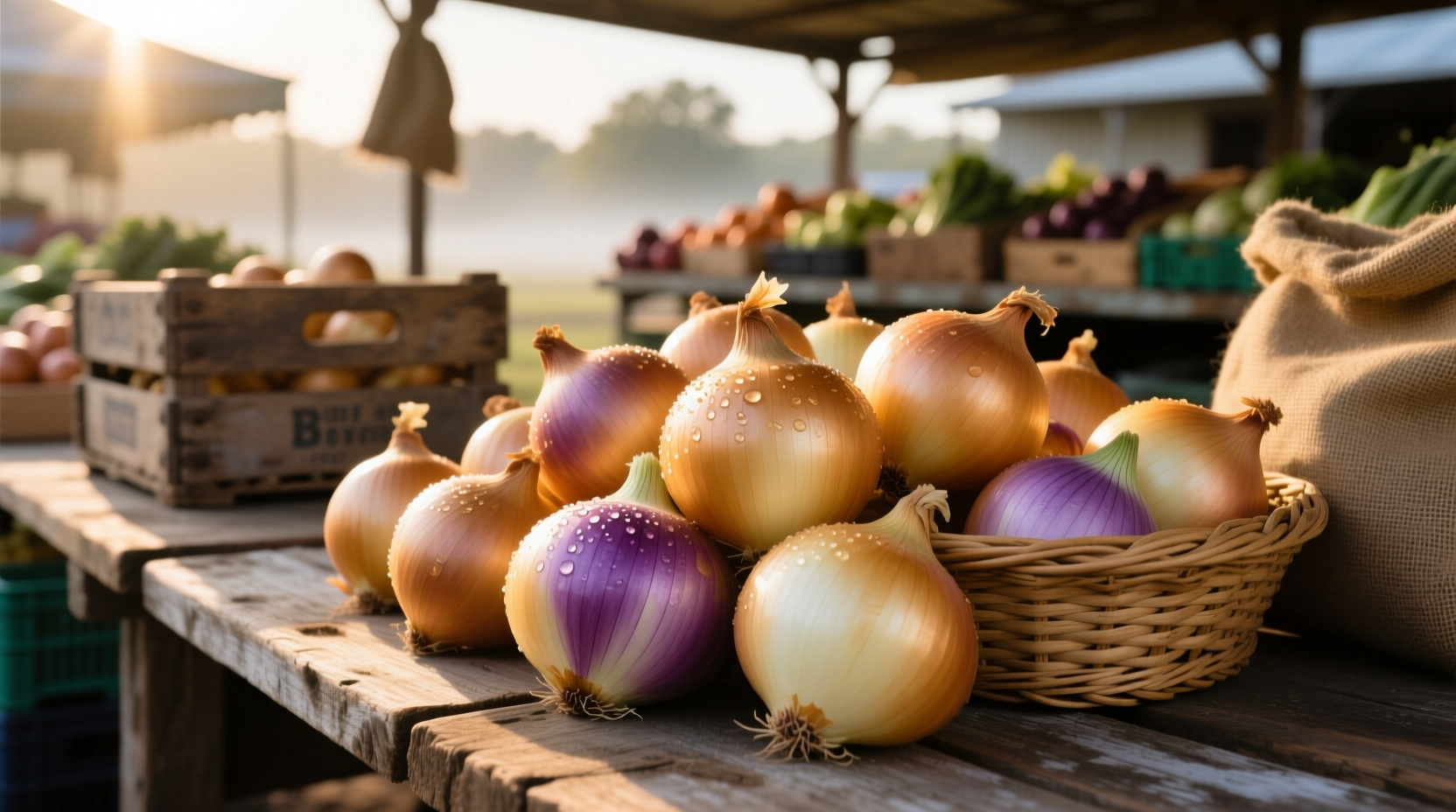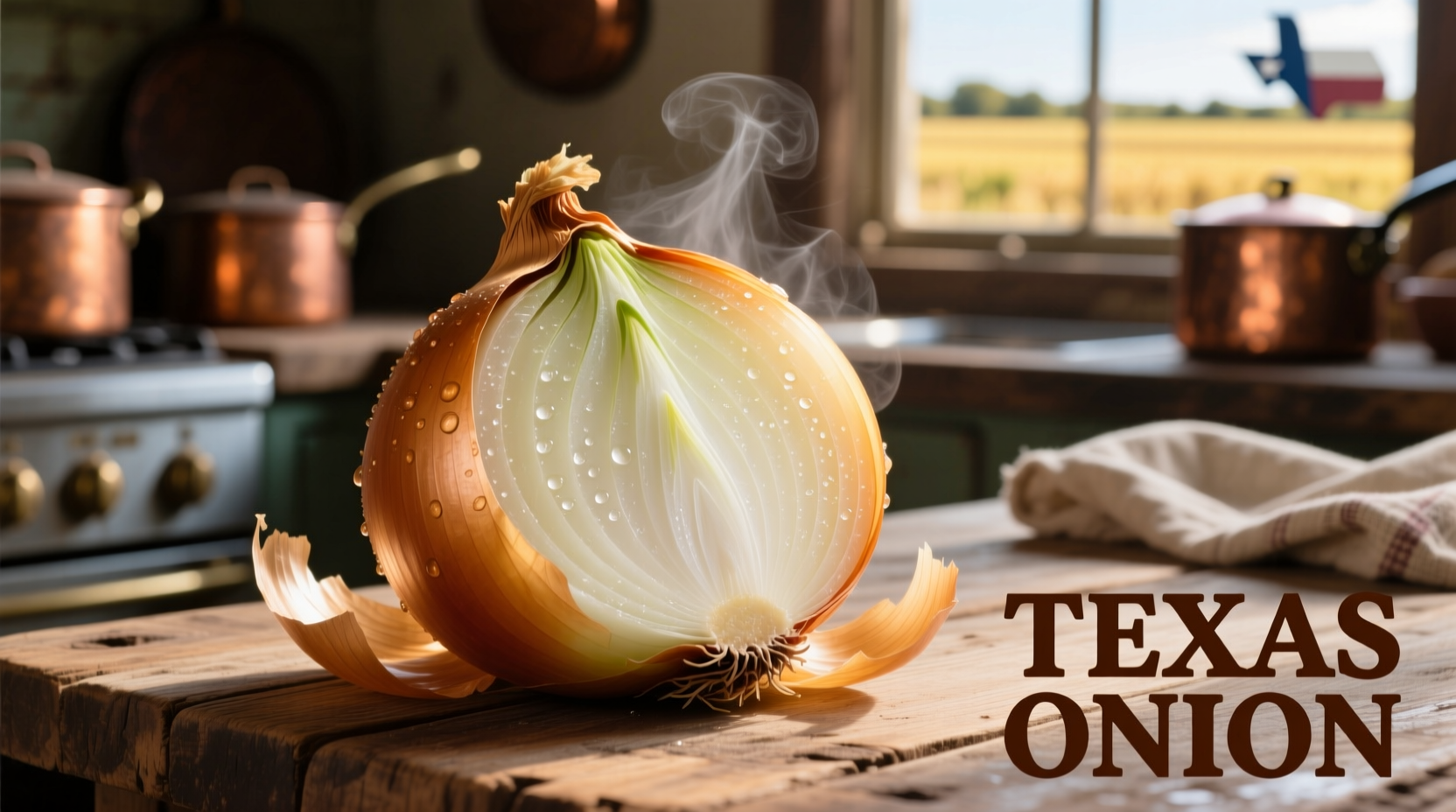When you bite into a genuine Texas Sweet onion, you're experiencing the perfect marriage of agricultural science and regional terroir. Unlike their sharper counterparts, these onions deliver a delicate sweetness that transforms ordinary dishes into extraordinary culinary creations without overwhelming other ingredients. This distinctive flavor profile makes them indispensable for both raw applications and cooked preparations.
What Makes Texas Onions Truly Special
Texas onions aren't just regular onions grown in Texas—they represent a carefully cultivated agricultural achievement. The magic happens in the sandy loam soils of South Texas, where specific mineral compositions interact with the region's warm days and cool nights to produce onions with remarkably low sulfur compounds. This biochemical difference is what gives Texas Sweets their signature mildness.
According to research from Texas A&M AgriLife Extension, the unique growing conditions in the Rio Grande Valley create onions with pyruvic acid levels measuring between 0.1-0.2 units, compared to standard yellow onions which typically register 3.0-5.0 units. This scientific difference translates directly to your taste buds—less bite, more sweetness, and dramatically reduced eye irritation when chopping.
| Onion Variety | Pyruvic Acid Level | Sweetness Rating | Best Culinary Uses |
|---|---|---|---|
| Texas 1015 Sweet | 0.1-0.2 | ★★★★★ | Raw applications, salads, sandwiches |
| Granex (Vidalia-type) | 0.2-0.3 | ★★★★☆ | Caramelizing, grilling, onion rings |
| Standard Yellow Onion | 3.0-5.0 | ★☆☆☆☆ | Soups, stews, cooked dishes |
From Field to Table: The Texas Onion Timeline
The story of Texas onions spans nearly a century of agricultural innovation. Understanding this evolution helps explain why these onions have become culinary treasures:
- 1930s: Texas agricultural researchers begin experimenting with sweet onion varieties in the Rio Grande Valley
- 1940s-1950s: Development of early sweet onion hybrids specifically adapted to Texas growing conditions
- 1980s: Introduction of the now-famous 1015 variety (named for its October 15 planting date)
- 1990s: Texas Sweet Onion becomes protected by federal marketing order, ensuring quality standards
- Present Day: Texas produces approximately 150,000 tons of sweet onions annually, primarily between January and June

Identifying Authentic Texas Sweet Onions
Not all onions labeled "Texas" are created equal. To ensure you're getting the genuine article, look for these distinguishing characteristics:
- Seasonality: True Texas Sweets are only available from late winter through early summer (January-June). If you see them in October, they're likely imposters.
- Physical Characteristics: Look for pale yellow skin, crisp white flesh, and a distinctive flat shape rather than the typical rounded onion form.
- Official Markings: Authentic Texas Sweet onions will bear the official "Texas Sweet" logo and may include the USDA certification mark.
The Texas Department of Agriculture maintains strict standards for onions bearing the "Texas Sweet" name. According to their guidelines, only onions grown in specific Texas counties and meeting precise sugar content requirements (minimum 6.0° Brix) can legally use this designation. This regulatory framework protects consumers from mislabeled products that don't deliver the authentic sweet onion experience.
Maximizing Your Texas Onion Experience
Once you've secured authentic Texas Sweet onions, proper handling makes all the difference in preserving their delicate flavor:
Selection Tips
Choose onions that feel heavy for their size with dry, papery skins. Avoid any with soft spots, mold, or green sprouting. The best Texas Sweets will have that characteristic flat shape and feel solid when gently squeezed.
Storage Guidelines
Unlike regular onions, Texas Sweets have higher water content and don't store as long. Keep them in a cool, dark place with good air circulation for up to 2 weeks. Never refrigerate whole Texas Sweets as the moisture will degrade their texture. If you've cut an onion, store the unused portion in an airtight container in the refrigerator for up to 5 days.
Culinary Applications That Shine
The true magic of Texas Sweet onions reveals itself in the kitchen. Their delicate flavor profile makes them versatile across numerous cooking methods:
Raw Applications
Because of their low sulfur content, Texas Sweets can be enjoyed raw without the harsh bite of regular onions. They're perfect for:
- Sliced paper-thin on burgers and sandwiches
- Chopped finely in fresh salsas and pico de gallo
- Layered in salads where you want onion flavor without overwhelming other ingredients
Cooked Preparations
When cooked, Texas Sweets caramelize beautifully without turning bitter:
- Slice thickly and grill for incredible sweetness
- Caramelize slowly for French onion soup with less added sugar needed
- Roast whole with other vegetables for a naturally sweet side dish
Professional chefs particularly value Texas Sweets for their ability to maintain structural integrity during cooking while delivering complex flavor without requiring lengthy cooking times to mellow their bite.
Nutritional Benefits Worth Noting
Beyond their exceptional flavor, Texas Sweet onions offer notable nutritional advantages. According to USDA FoodData Central, one medium Texas Sweet onion (approximately 148g) provides:
- 64 calories
- 15g of carbohydrates
- 3g of dietary fiber (12% of daily value)
- 20% of the daily value for vitamin C
- Significant amounts of B vitamins and potassium
Like all onions, Texas Sweets contain beneficial flavonoids and sulfur compounds associated with various health benefits, though in more moderate concentrations than pungent onion varieties. This makes them an excellent choice for those seeking onion benefits without the digestive discomfort sometimes associated with stronger varieties.
Where and When to Find Authentic Texas Sweets
Understanding the seasonal availability of genuine Texas Sweet onions prevents disappointment and ensures you're getting the real deal:
- Peak Season: Late February through May represents the absolute peak of flavor and availability
- Early Season: January onions tend to be slightly less sweet as they're harvested earlier
- Late Season: June onions may have slightly thinner skins and begin transitioning to storage varieties
When shopping, look for the official Texas Department of Agriculture certification. Farmers markets in Texas during the appropriate season offer the freshest options, while major grocery chains typically carry certified Texas Sweets during their season with proper labeling. Remember that true Texas Sweets cannot be grown year-round—their limited availability is part of what makes them special.











 浙公网安备
33010002000092号
浙公网安备
33010002000092号 浙B2-20120091-4
浙B2-20120091-4